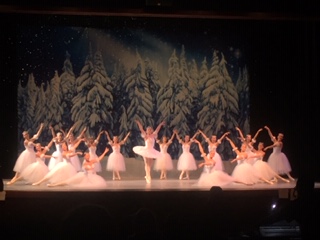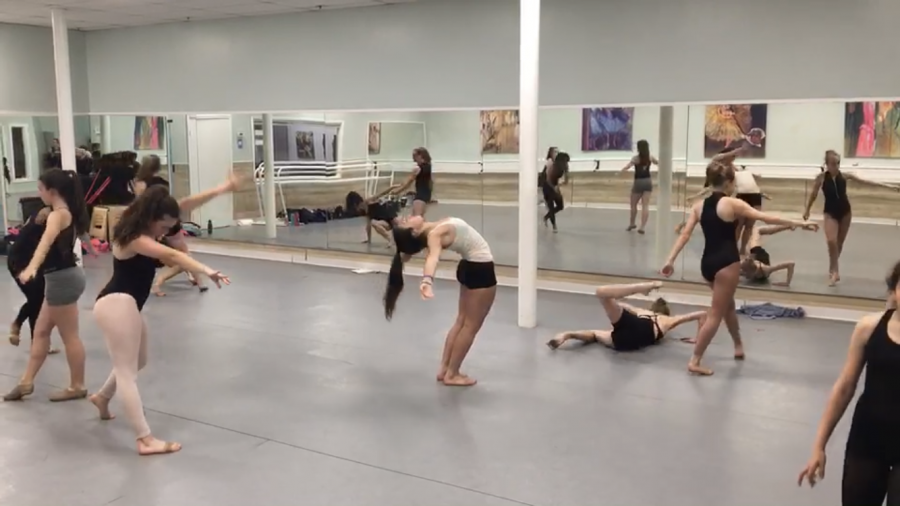CAPA Dancers Deserve PE Credit

December 19, 2018
California Academy of Performing Arts dancers spend as many as 25 hours a week at the dance studio. Balancing the demands of dance with the obligations of academics can be challenging, but many CAPA dancers make it look effortless.
Freshman Adriana Colon, a dancer at CAPA, said, “A lot of people think that everything is super easy and it’s effortless but it’s only effortless because we make it look effortless. Like, it’s actually a lot of work.”
“Most people don’t see performances because it’s not a school-sponsored sport so most people don’t even see what we do every day. And if they do, they only see the end result, the performances, they don’t see the process of what it took to get there. They don’t really see our practices and all the sweat and all the hours that we put into five minutes on stage,” said sophomore CAPA dancer Cat Dunbar.
Dunbar believes that dancers suffer from negative stereotypes. “I know that when I say I go to CAPA, I either get a laughing response or I get a negative response,” said Dunbar.
It is not unusual for a dancer to be asked if they participate in a “real sport” in addition to dance.
The belittlement of this art form is further reinforced by certain school policies. Dance does not count for PE credit, so dancers are forced to take 10 credits of a PE elective while those who participate in an after-school sport like soccer or basketball can have that requirement waived. Adding insult to injury, this deprives dancers of the opportunity to fill their schedule with additional AP or other advanced courses that might improve their college acceptance chances.
PE is supposed to be about developing fitness. The current waiver policy suggests that school reputation rather than student well being is what drives administrative decisions. While, yes, it looks good for the school to be able to say that a high percentage of students participate in school sports, many students have other commitments, such as CAPA. Dance requires just as much athletic ability as any other sport, if not more, so, if PE requirements are truly about staying in shape, CAPA should count.
The number of hours that a dancer works on his or her craft should be consider just as athletically challenging as the hours put in by a defensive lineman or distance runner.
Dancers are at the studio for about 20 hours during the weeks leading up to the annual Nutcracker performances, with total rehearsal time in preparation for the production totaling over 75 hours in just a few weeks (this is not including the hundreds of hours dancers spend at the studio throughout the year). 70 hours just happens to be the after-school sports’ total time requirement for the district’s PE waiver.
Dance also requires a level of artistry; when dancers perform, they have to convey a story while doing athletic movements.
Dance is far more challenging than sports in which an athlete need only learn the skills for a single position or perfect movement patters for a specific task. With dance, each individual dancer must know all positions, all movements, all steps, be able to improvise, and always be ready to learn a new role. Dance requires a versatility rarely seen in most other sports. It is also a theatrical performance that can not be halted due to injury or other mishap. There are no timeouts or injury substitutions.
Freshman CAPA dancer Olivia Curtis said, “If something happens, or someone gets injured, you just have to keep on going. Whereas in a sport, you would drop on a knee, you could just substitute someone in…”
CAPA is also a family. Through dance, girls build lifelong friendships over the course of a 10 to 15 year commitment. A typical sports team will stay together for one, maybe two seasons before it is composed of entirely new people. In dance, the same 15 or 20 people, give or take a dropout, learn to depend on and support each other through a myriad of challenges.
While candy gram recognition for senior performers was a recent step in the right direction, dancers will continue to be shortchanged until they are afforded the same opportunity to earn PE credit as other after-school athletes.
It’s time for the district to update the PE waiver policy to acknowledge the high level of commitment, fitness, and skill achieved by CAPA dancers.

